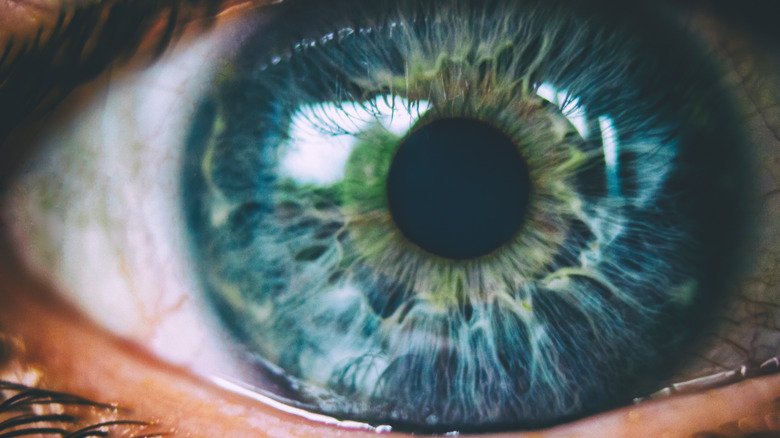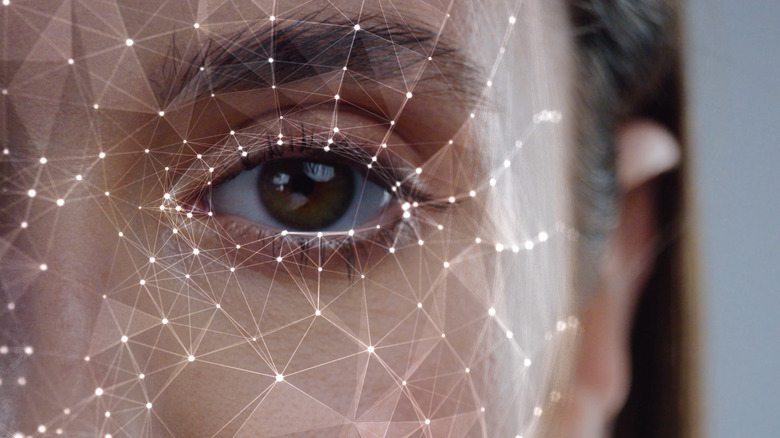Here's How Your Eyes Constantly Deceive You
Why in the world would you believe your own eyes? While some say they are the window to the soul, science reveals the truth is far more complex. Flawed at best, deceptive at worst, the human eye is a sensory organ to behold, but certainly not to be trusted.
Examples of this are evident all around. Compared to members of the animal kingdom, our vision certainly has its limitations. The chameleon, for example, exhibits "binocular vision," a term that means the lizard can stare in two different places at the same time (via AskNature). As a point of comparison, the chameleon's vision is 360 degrees, while our mere human vision is half that at 180 degrees (via uh.edu).
From limited light perception to wacky color restrictions; from a stationary "cyclops" take on vision to a straight-up program of brain-eye deception, it's clear that seeing is not proving. Sure, you might believe what you see, but that doesn't mean it really happened.
The human eye is forbidden from seeing certain colors
Wink, wink. When it comes to what you're seeing, well, the truth is you just never know. Some of the tricks your eyes play are purely incidental — they are due to limitations that hamper our field of vision. Despite having a jaw-dropping 2 million moving parts (via The Discovery Eye Foundation), the human eyeball still can't see everything.
In fact, there are colors floating all around the universe that the human eye is forbidden from seeing. Known as the "forbidden colors" (via LiveScience), these captivating hues of reddish-green and yellowish-blue scientifically exist. Yet due to the way we, as human beings, perceive light, these crafty color combinations effectively cancel each other out, causing our brains to obliterate them before we even get a look. Just because these unseen adjustments are a bit of an accident doesn't mean your eye is not actively working to deceive you.
Your eyes are always playing tricks on you
According to BBC Future, optical illusions happen when your eyes attempt to trick your mind. One of the most famous examples is the Muller-Lyer Illusion, which illustrates how our mind falsely interprets arrows of the same length as being different lengths. This simple example shows that our brains can even be fooled when looking at straight lines.
A more recent example is the viral dress photo, which started an online frenzy when people saw different colors on the same dress. Theories abound as to why this dress was so perplexing. In an interview with BBC, chair of color science Professor Stephen Westland mused that the confusion was created by the lighting. Whatever the reason, what we know is that when a visual cue is missing, the mind will fill in the gaps based almost entirely upon assumption. The Discovery Eye Foundation reports that 80% of our memories stem from something we saw, or at least something we think we saw. To that end, how many of our memories are even real?


